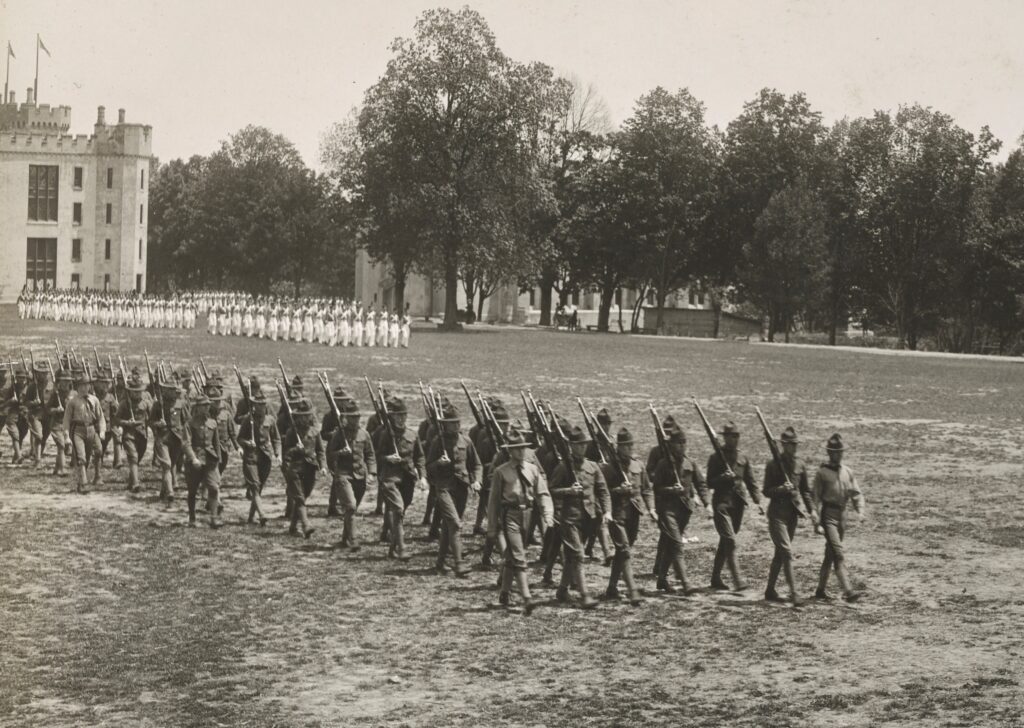The Students’ Army Training Corps (SATC) is an overlooked part of the United States’ military training system during World War I. Realizing that they would need more officers due to the rapid expansion of the Army for the war, the extremely high expected casualty rate of officers, and the planned spring 1919 offensive, the War Department created the SATC in 1918. College campuses served as training locations and male students enrolled at the schools received officer training in addition to their academic studies. Some of the colleges also provided training in technical skills and trades to men not enrolled at the institution.
Previous study and analysis of the SATC either provided a brief overview of the program or focused on how college leadership and administrations handled the SATC. What has not been examined is the SATC’s daily operation on college campuses, how it fit into the War Department’s mobilization plan, and its role within the military training system. Given the format of the program and the conditions on the front lines, it is clear that the War Department intended for the SATC to be an important part of the United States military’s training system, especially since most military planners expected World War I to continue into 1919.
This digital exhibit examines the SATC in depth at six Virginia colleges: The University of Virginia, Virginia Polytechnic Institute, Virginia Military Institute, William & Mary, Hampton University, and Virginia Union University. Each school brings a unique perspective and highlights the issues that SATC units across the country faced.
It is recommended to start with the Background section before moving on to the other portions of the website, which can be explored in any order.
Menu

